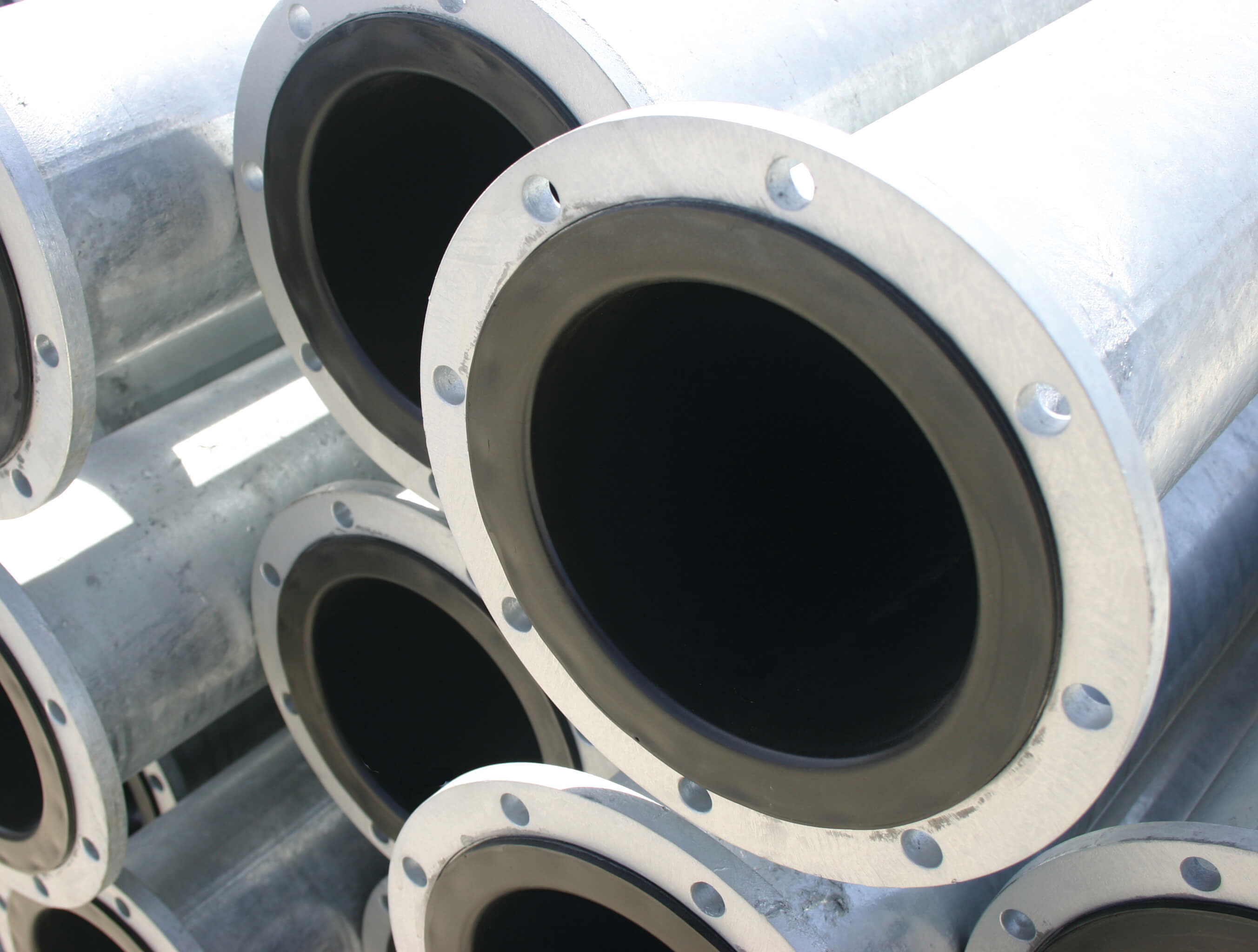This article appears in Potato Grower's July 2017 Smart Irrigation Month issue.
Advancements in technology have allowed crop irrigation pipelines to run with minimal problems for years at a time. New products and techniques such as digital control panels, sprinkler packages and protective coatings like galvanizing have extended these machines’ lives considerably, securing irrigation pipelines as a lasting investment.
Galvanizing is one of the more significant techniques to extend pipeline life. The galvanizing process applies a protective coating to metals to prevent rusting. The most common method is hot-dip galvanizing, in which parts are submerged in a bath of molten zinc.
Zinc coating prevents corrosive substances from reaching the underlying steel or iron. The zinc also serves as a self-healing defensive layer, so that even if the coating is scratched, the exposed steel will still be protected by the remaining zinc. The coating also protects its base metal by corroding before the metal. However, even with advancements in galvanizing and other technologies, corrosion issues can cause a pipeline to not meet customer expectations.
Where the Issue Started
Details on pipeline problems started to be documented in the Middle East during the mid-1980s. Farmers in Saudi Arabia and Libya kept encountering issues with their irrigation machinery, with problems ranging from significant leaks to structural failures and cracks.
In a farming region south of Riyadh, Saudi Arabia, farmers were encountering these issues with their pipelines. Little did the farming community know, hydrogeologists had discovered that aquifers in the area contained above-average pH levels, along with high levels of chlorides and sulfates.
The data these engineers collected established water quality in aquifers as the most significant effector of pipeline metals. They also concluded that crop protection products, chemigation, sulfur products, fertigation programs and fertilizers degraded the water quality, which had caused problems in the past.
After further analysis, the engineers focused their efforts on the specific effects of chlorides, sulfates and dissolved gases like oxygen and carbon dioxide. They attempted to develop prospective solutions to combat water quality, which included improved drains and epoxy coatings over galvanizing. While some of these fixes were promising, they eventually began to wear down and did not resolve the problem.
During this same time period in North America, research teams discovered identical water quality issues in aquifers in Texas. After reviewing their findings, they found more and more areas across the country had the same problems. Sulfates and chlorides were presenting in a variety of areas throughout the U.S. Throughout the 1990s, North America posed more issues to engineers. Soft water found in Delaware, New Jersey and Georgia lacked essential minerals such as calcium and magnesium. Without these elements in the water, the galvanizing couldn’t form a naturally occurring protective film.
Sometimes two fields next to each other had completely different water qualities due to two different aquifers with different chemical concentrations. It all depended on the chemical makeup of the water in the aquifer, which could change throughout the year with seasonality.
A Corrosion Solution
 Problem areas with low pH concentrations in the aquifer would require alternate solutions for growers. This eventually led engineers at Valley Irrigation to develop a permanent solution to pipeline corrosion issues in 1992 with the company’s PolySpan product line.
Problem areas with low pH concentrations in the aquifer would require alternate solutions for growers. This eventually led engineers at Valley Irrigation to develop a permanent solution to pipeline corrosion issues in 1992 with the company’s PolySpan product line.
PolySpan irrigation pipes protect irrigation pipelines from any corrosive components in water, ensuring a long life for the irrigation machine. PolySpan is a polyethylene liner that is installed inside a span pipe, which then protects the metals against the effects of acidic, alkaline, waste, corrosive and saline waters.
In 1998 Valley dedicated a team to establish a system to estimate galvanizing life across the country. This team’s findings led to the development of the Valley Water Review Model. This model utilizes predictive tools to establish indirect estimates of product corrosion potential using water chemistry information.
Engineers and researchers also debunked several myths on galvanizing after collecting all the data on the issue. For example, it’s not possible to apply galvanized coating more than once on pipelines. They also found that growers should not receive “shiny” pipelines; rather, they should be more gray. This means that the natural oxide film hasn’t formed yet. Pipelines need calcium and magnesium in water to form that film. “The natural oxidized color of galvanized metals is a dull gray,” says Jake LaRue, Valley’s director of research and development. “Gray is good.”
The Verdict
Collecting data on water quality led researchers to determine that galvanizing pipelines was still the best course of action for a majority of the regions where products were being shipped.
LaRue advises that corrosion solutions are completely dependent on the chemical makeup of the water being pumped through a particular pipeline. Machine life is extended significantly when metals are galvanized and/or paired with technologies like PolySpan. For growers with limited knowledge of the chemical content of their water, the first step is to get a water test, which many irrigation dealers offer for free. Continued research on new product and corrosion has shown advancements which include chemigation data collection, as well as improved draining and flushing solutions, all of which have been correlated to extended pipeline life.
This article originally appeared as a two-part post on the irrigation.education website.